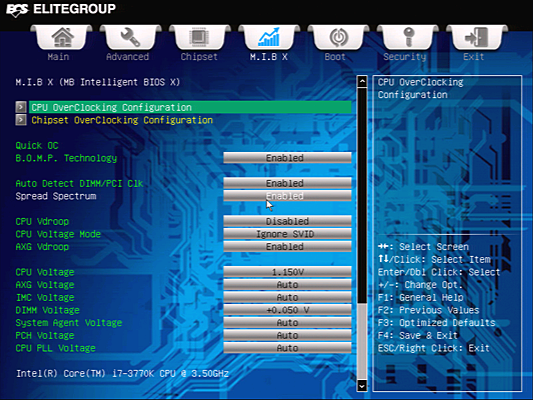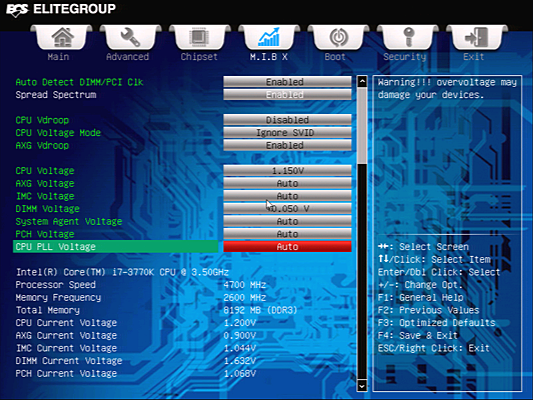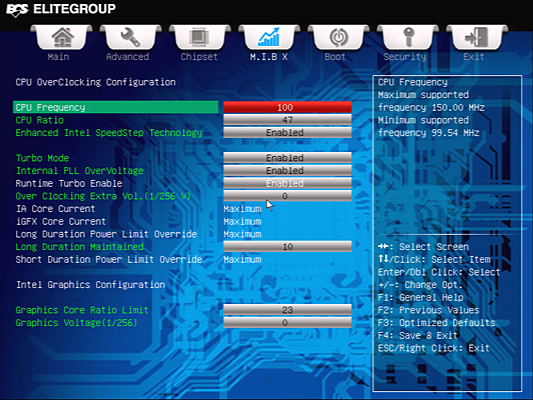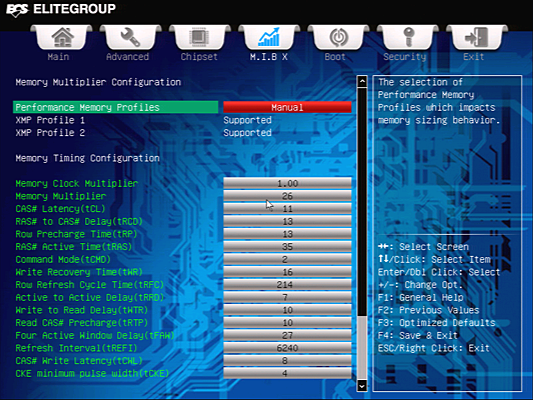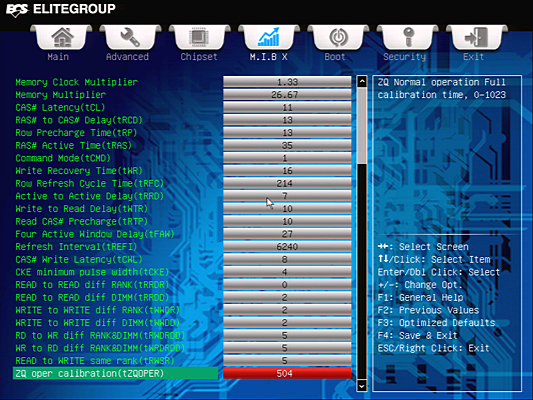Six $220-280 Z77 Express-Based Motherboards, Reviewed
Expanded graphics card support, enhanced on-board features that include Thunderbolt on some models, and more-robust voltage control are all good reasons to consider paying a little extra for a higher-end motherboard. Today we examine five top choices.
Z77H2-AX Firmware
We discussed our firmware problem on the software page, if only to say that recovering from bad overclocking settings is easier to do from software. But part of the problem was that we are testing this board with old firmware.
The firmware shipping with current Z77H2-AX samples was developed way back in June. But that’s not the version we used. Our motherboard round-up invitation specifically states that, in order to keep things fair, we use the most recent firmware version published on each vendor's support page. This is to avoid special optimizations for review sites. This stuff does happen, folks. ECS didn’t publish its June firmware, though, and the only version found on its support page is from March. This is particularly problematic for an ECS board, because the company's infamous stuck-BIOS issues are often solved in its later firmware updates.
Giving ECS the opportunity to update its site after our deadline wouldn't have been fair to the vendors who submitted their products with official firmware versions right out of the gate.
A CPU Voltage setting of 1.150 V got us to a little over 1.2 V at idle, and changing the CPU Vdroop setting to Disable allowed voltage to climb to 1.25 V under load. This was the only way we could get to our target load voltage without running an excessively-high idle voltage.
In spite of our relatively low idle voltage, the board was still able to run our CPU at its 47 x 100 MHz setting. That’s not quite 4.7 GHz however, since the board’s actual base clock is 99.78 MHz.
We had to leave Intel's Turbo Boost technology enabled to reach a higher multiplier. But setting the ratio to 47x caused the CPU to jump from 1.6 GHz at idle to 4.7 GHz under load.
The Z77H2-AX doesn’t let you fine-tune memory from XMP mode, but the board retains previously-set timings when entering manual mode. Entering Manual mode from Auto mode makes SPD values your baseline, while entering Manual mode from XMP mode makes those timings stick as well. Because of that, we were able to start our DRAM overclocking effort without configuring primary, secondary, and tertiary controls by hand.
Get Tom's Hardware's best news and in-depth reviews, straight to your inbox.
-
roberta As u have reviewed SIX (6) motherboards, the article's title should be:Reply
"Six $220-280 Z77 Express-Based Motherboards, Reviewed" -
mayankleoboy1 No SATA and USB tests ? data transfer speed differences will typically be noticable in everyday usage.Reply
Also, the time taken to show the windows loading screen/ BIOS page.. -
admit it.Reply
you really liked the black/grey dimms and PCI slots of the gigabyte better than the blue/black of the MSI! -
Crashman robertaAs u have reviewed SIX (6) motherboards, the article's title should be:"Six $220-280 Z77 Express-Based Motherboards, Reviewed"Let's see what the article says:ReplyThe one motherboard in today’s line-up with a 48-lane PCIe 3.0 bridge is ECS’ Golden Z77H2-AX. Unfortunately, this platform climbed $40 beyond the budget limit of today’s round-up in the time we've been reviewing it. We're tired of seeing board vendors playing pricing games based on our review schedule (this isn't the first time we're seeing a curiously-timed price move). So, since we put the work in to review ECS' submission, we're including our already-gathered data and simply withholding the board from any award candidacy.
mayankleoboy1No SATA and USB tests ? data transfer speed differences will typically be noticable in everyday usage.Also, the time taken to show the windows loading screen/ BIOS page..Would have covered windows load time except that it wasn't markedly different. That is, after disabling empty SATA controllers. If you count the time that it takes to get the "No Device Found" error on boards that have extra SATA controllers, you're penalizing a board for having more features.
Andrew Ku tests drive controllers. I'm trying to get him to "write the book" on controller performance, since dozens of boards use only a few different controllers. As for testing things like Z77 controller performance on board A vs Z77 controller performance on board B, it's a waste of time unless something is broken. So the article looked for "broken stuff". See the red bar on the first chart:
http://www.tomshardware.com/reviews/z77x-up5-th-z77a-gd80-z77-oc-formula,3305-22.html
With nothing broken, there's no excuse to test the Z77 controller six times. Back to me begging Andrew Ku for a comprehensive comparison of every SATA controller currently available on mainstream-brand enthusiast boards.
-
JeanLuc Arghh! Why the hell are you overclocking the base clock on Z77!! That will most likely cause permanent damage to your CPU.Reply -
You left out a key aspect for overclockers which is vcore offset.Reply
This allows ocer's to achieve higher overclocks while still retaining the power saving functions, instead of being forced to either reduce the overclock, or be forced to run high voltage 24/7.
MSI doesn't have this key feature. -
Onus I would think that the Sabertooth's five year warranty merits at least a mention in any value conclusion.Reply
-
luciferano JeanLucArghh! Why the hell are you overclocking the base clock on Z77!! That will most likely cause permanent damage to your CPU.Reply
Overclocking the BLCK is very unlikely to cause any damage, it's just likely to not give much of a stable overclock. -
Crashman jtt283I would think that the Sabertooth's five year warranty merits at least a mention in any value conclusion.I actually missed that, having checked the lesser brands just to make sure those still had their three year warranty. Will add it.Reply
